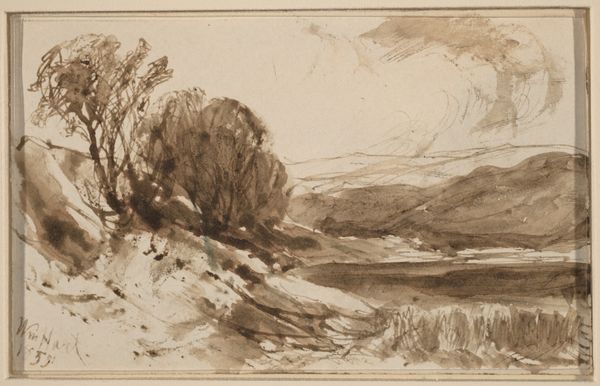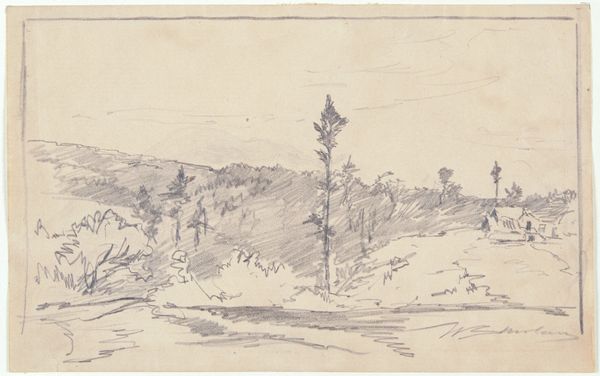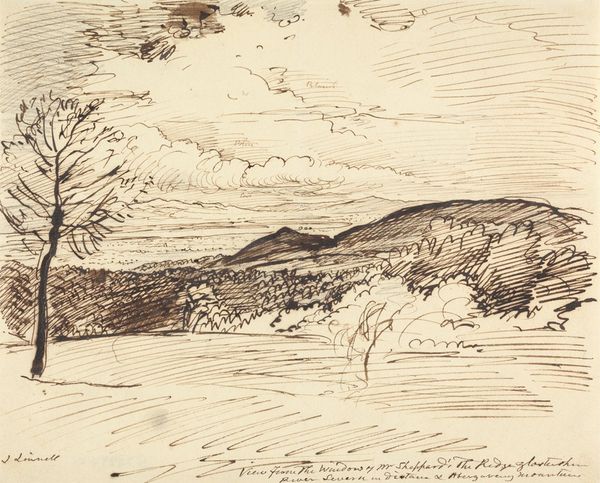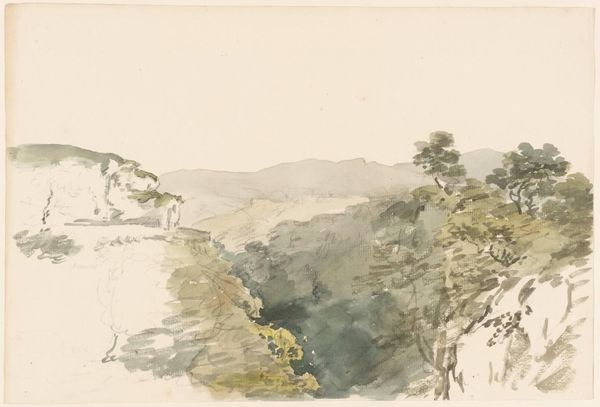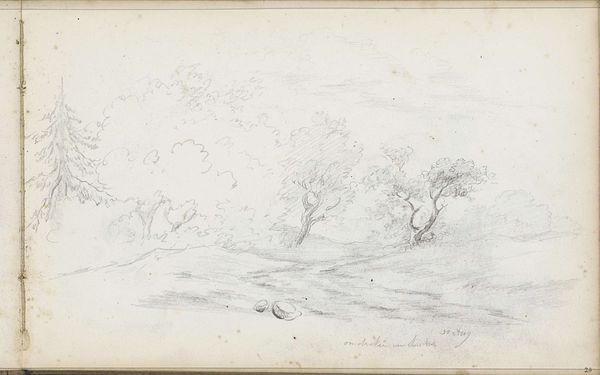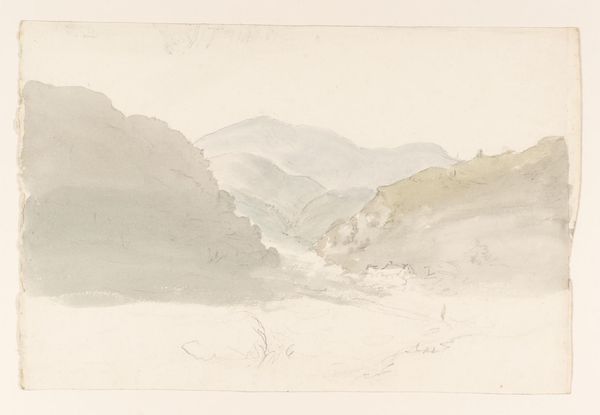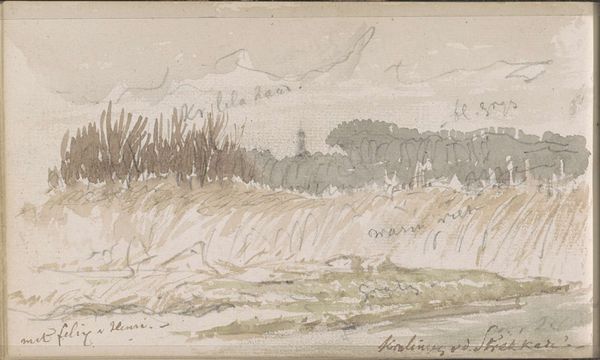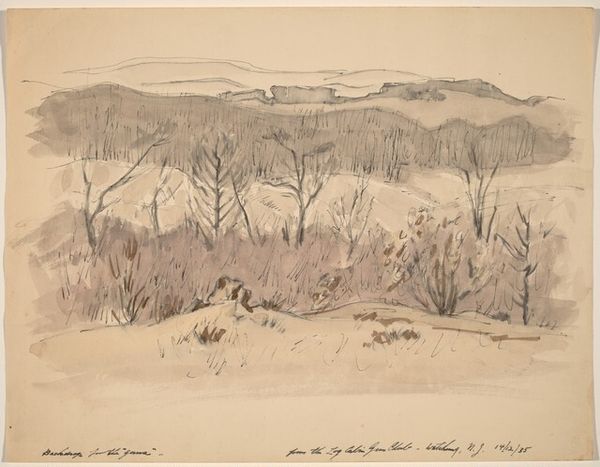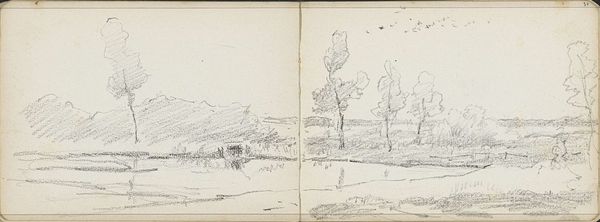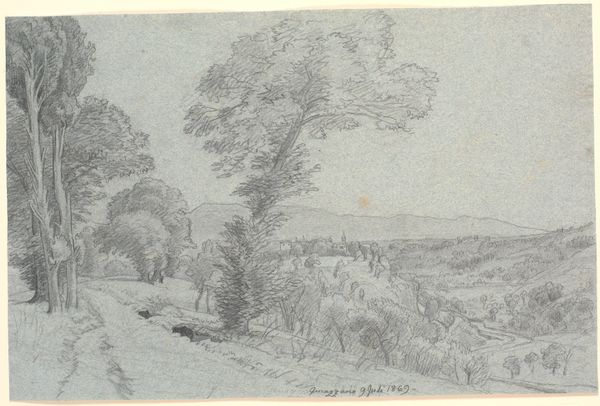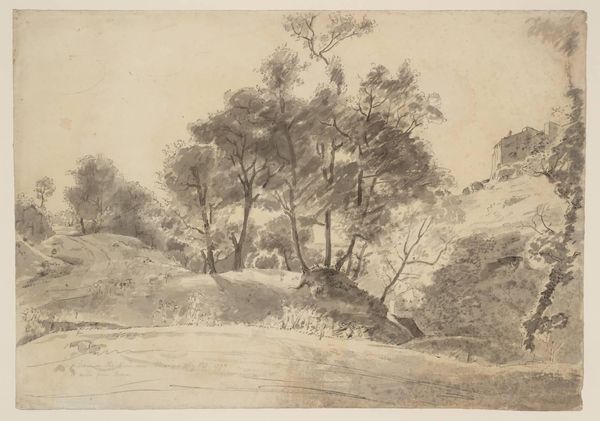
drawing, pencil, pen
#
drawing
#
pen sketch
#
landscape
#
romanticism
#
pencil
#
pen
Copyright: Public Domain: Artvee
Editor: This is "View at Mr. Sheppard's, The Ridge, Gloucestershire" by John Linnell, and it appears to be a pen and pencil drawing. It's very subtle in its tones, almost monochromatic, and it makes me think about the relationship between landscape art and documentation. What do you see in this piece that connects to its historical moment? Curator: Well, what's particularly interesting is the apparent casualness. It is a landscape, of course, and landscape painting and drawing was increasingly popular, seen as a powerful tool for national identity. Do you notice anything about the implied viewpoint of the artist? Editor: It's sort of an elevated view. It feels like we’re standing slightly above the landscape, looking down onto it. Is that relevant? Curator: Precisely. This 'commanding view' was a familiar strategy in landscape art and one which spoke to prevailing social hierarchies. Land ownership, national pride – those kinds of concepts. But notice the apparent spontaneity and unfinished nature. While it shares the same subject matter as some grander landscape paintings of the time, its effect is more intimate. Does it suggest that landscape is available to everybody, or only the privilege of few? Editor: It seems less idealized and more personal, maybe even accessible. Almost like a travel sketch, less about glorifying the land and more about a fleeting experience of being in it. Curator: Exactly! This could signal a shift towards a democratization of landscape art and the romantic vision, aligning it with individual experience rather than nationalistic ideals. It is like he is opening up that experience. Editor: That’s really interesting. I hadn't considered how even a simple sketch could carry those kinds of cultural implications. I’ll definitely look at landscapes differently now.
Comments
No comments
Be the first to comment and join the conversation on the ultimate creative platform.
